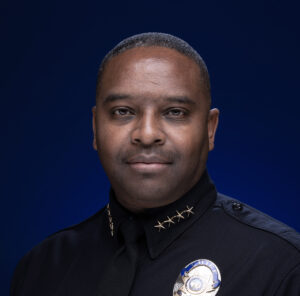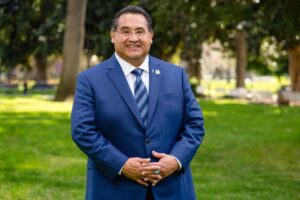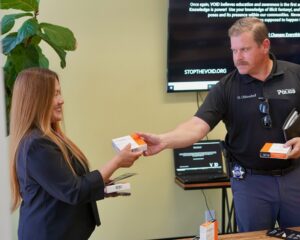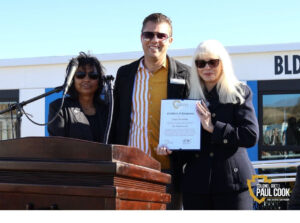San Bernardino Police Department Discusses Call Response Prioritization and Improved Response Times at Coffee with a Cop
3 min read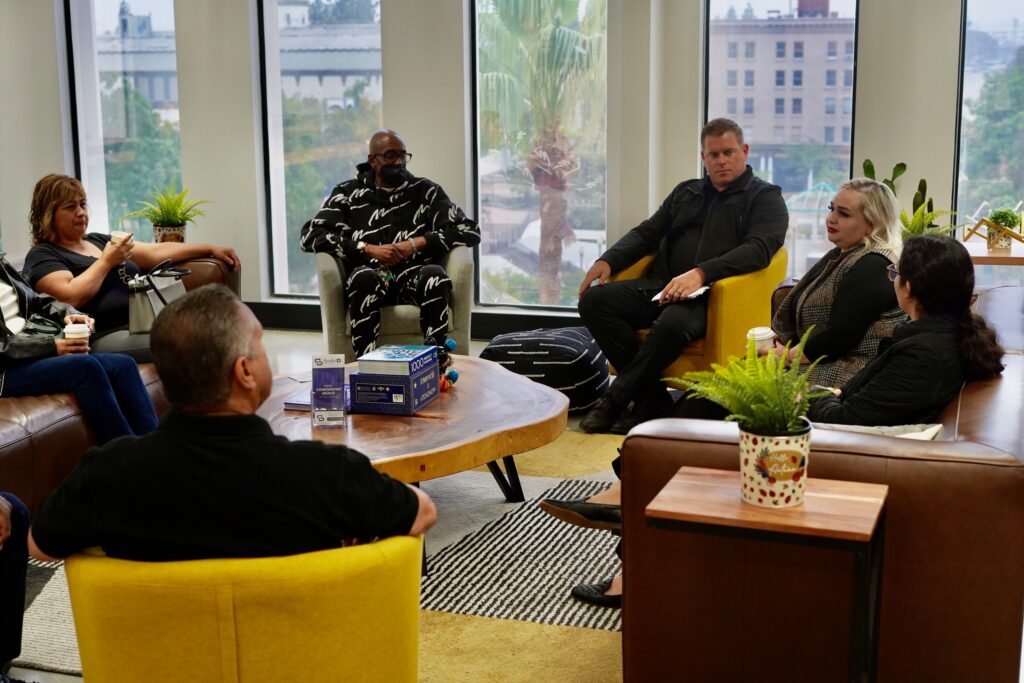
Lieutenant Nick Oldendorf (center-right) discussing call response prioritization with San Bernardino residents on October 15th, 2024.
At its monthly Coffee with a Cop event on October 15th, the San Bernardino Police Department (SBPD) provided an in-depth look at how it manages call responses and addressed the ongoing staffing challenges the department faces. Held at Studio D in downtown San Bernardino, the event offered the community a chance to better understand how calls are prioritized and why response times can vary depending on available resources.
Lieutenant Nick Oldendorf explained that SBPD categorizes calls for service into seven priority levels, depending on the urgency and severity of the situation. The priority structure ensures that the most critical emergencies are handled promptly, but lower-priority calls may face delays due to limited staffing.
The call prioritization system includes the following categories:
- Priority E (Emergency): Reserved for immediate threats to life, such as stabbings or sexual assaults.
- Priority 1: Incidents that require a swift response, such as physical fights or active violence.
- Priority 2: Serious situations such as burglaries or reports of suspicious individuals that, while urgent, may not involve an immediate threat to life.
- Priority 3: Disturbances that do not pose an immediate danger but still require police intervention.
- Priority 4: Non-urgent, “cold” reports, such as vehicle break-ins or incidents that have already occurred and pose no ongoing risk.
- Priority 5: Administrative or routine calls, such as requests for information or assistance with non-emergency matters.
- Priority 6: Low-priority calls, such as welfare checks or when a parent is concerned that another caregiver is not answering the phone.
Chief of Police Darren Goodman emphasized that while each call is important to the individual, the department must prioritize based on available resources and the level of threat posed by each situation. “Just because a call starts as a Priority 3 doesn’t mean it can’t be elevated to a Priority 1 if we receive new information,” he noted.
Despite these resource limitations, Goodman assured attendees that response times have significantly improved in recent years. “We’ve reduced our response times by over 40 percent compared to where we were two years ago,” Goodman said. This improvement has allowed the department to take a more proactive approach to policing, contributing to a 50 percent reduction in homicides in the past two years.
Lieutenant Nick Oldendorf echoed this optimism, adding that improved morale within the department has contributed to these better outcomes. “Our officers are responding faster, and we’ve seen a huge improvement in both response times and community engagement,” Oldendorf stated.
However, both Goodman and Oldendorf acknowledged that more staffing is needed to maintain and improve these gains. The department currently operates with around 280 employees, including officers, administrators, and management staff, but only about 15 officers are on duty per shift to cover a city that spans 60 square miles. Goodman expressed a desire to increase the number of officers to 350 or 400, explaining that it would provide the optimal level of service. Still, he noted that any such increase would depend on the city’s budget priorities and community support for higher taxes to fund additional staffing.
Goodman used a grocery store analogy to describe the department’s challenges, “It’s like having 10 checkout lines and only three cashiers — the lines are going to be long.”
Residents expressed concerns about long wait times, including one woman who shared that it took three hours for police to respond after her sister was robbed. Goodman explained that response times can vary significantly depending on the nature of the call, noting that an active robbery could be prioritized over one that occurred 20 minutes earlier.
